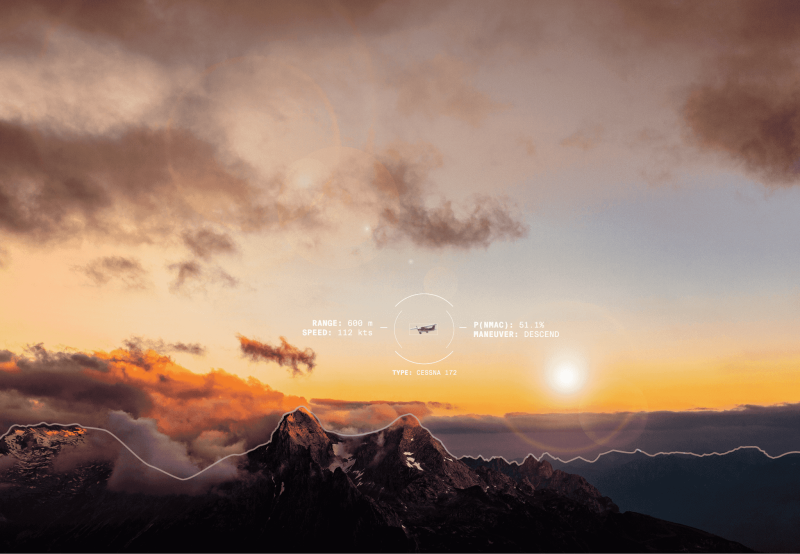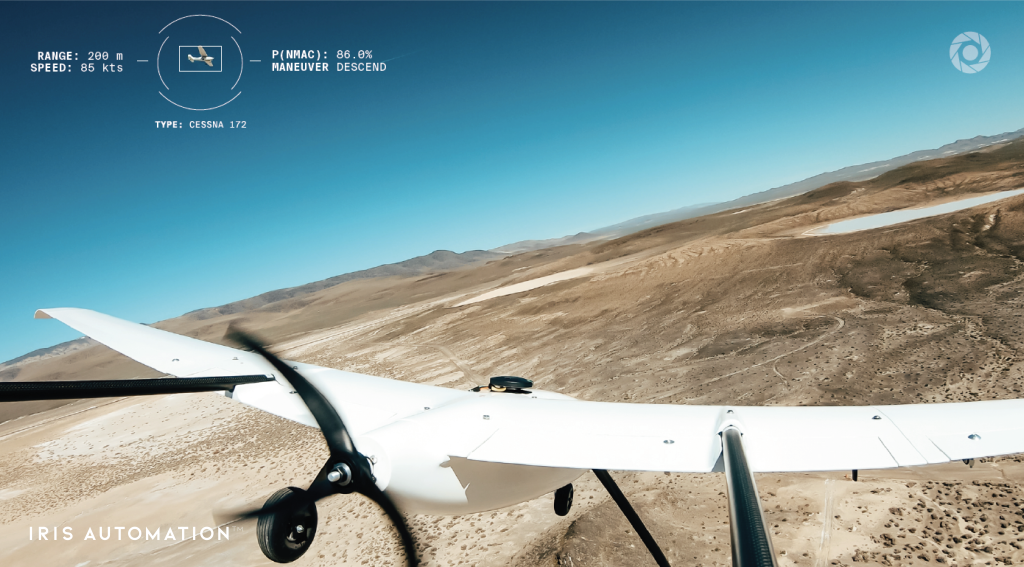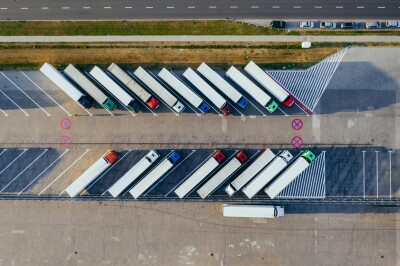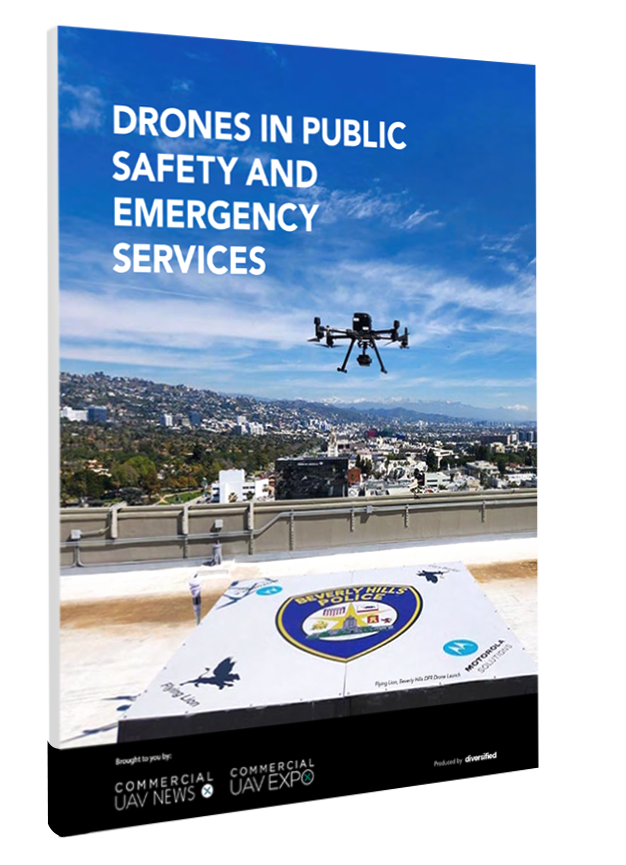At the FAA’s Sixth Annual UAS Symposium, FAA Administrator Steve Dickson announced the establishment of a new Aviation Rulemaking Committee (ARC) to develop a regulatory path for routine beyond visual line of sight (BVLOS) operations. Shortly after the announcement, Iris Automation, one of the leaders in developing onboard detect and avoid systems for drones, was identified as one of the members of the committee.
The ability to reliably and predictably detect and strategically avoid other aircraft and obstacles is considered to be a fundamental requirement for any future routine BVLOS rule. Determining the performance criteria for this and other safety measures will be at the center of the six-month committee period.
“The BVLOS ARC will have to address a number of critical integration safety issues, first among them how drones will be equipped to see and avoid other aircraft to ensure safety of the National Airspace and prevent mid-air collisions,” Sean Deverey, Director of Government of Affairs at Iris Automation, told Commercial UAV News. “This will require establishing performance-based standards for onboard detect and avoid technology that will allow the drone and the RPIC (remote pilot in command) to have situational awareness and avoid collisions.”
Because detect and avoid (DAA) will be an integral component to unlocking routine BVLOS operations and safe autonomous integration into the National Airspace, we spoke with Jason Hardy-Smith, VP of Products at Iris Automation, to get in-depth insight into their approach to DAA, the challenges of developing and testing DAA systems for drones, how regulators influence the development of these systems, how industry informs regulations, and more.

Danielle Gagne: What is the value of flying beyond visual line of sight for the enterprise?
Jason Hardy-Smith: We’ve all seen what drones can do, and there is tremendous value in the tasks they can perform. If drones are able to safely fly BVLOS, the efficiencies and cost savings get multiplied exponentially.
For example, one of our first customers, Avisight, has been using drones to conduct pipeline and powerline inspections. There are hundreds of thousands of miles of pipeline in the U.S. alone. They’ve been doing these inspections with drones in five-mile chunks to remain within visual line of sight. This means they have to pack up and drive to a new location and do the process all over again numerous times each day. This is inefficient. It is more efficient than manual inspections and cheaper than using general aviation aircraft, but what will unlock efficiencies is to be able to fly hundreds of miles in one go.
It's also a question of scale. Under current restrictions a drone requires at least one pilot on the ground. Enabling BVLOS through autonomous flights frees up that restriction making it possible for one pilot to manage multiple drones at once. This is a significant breakthrough in scale and costs.
Detect and avoid is an important part to unlocking those efficiencies. What are some of the technical challenges associated with developing a detect and avoid system for drones? How does the Casia system approach those challenges?
The fact is we have been able to fly BVLOS for years. Autopilots are fairly mature at this point. The endurance of drones has gotten a whole lot better; they have no problem flying 100 miles or more, and we have all the sensors to collect the data to perform the tasks we need them for. There is nothing really stopping people from flying BVLOS today other than it isn’t safe.
General aviation (GA) aircraft can fly where they need to because pilots can see other GA aircraft. Drones in contrast have smaller wingspans of about one to two meters or even smaller; pilots just can’t see them. Because of this civil aviation authorities have put the onus on the remote pilot in command to be able to see and avoid any piloted aircraft. That’s what we are trying to solve with detect and avoid—we want drones to see everything and avoid everything. So, the first challenge is designing a reliable computer vision system.
To address this challenge, we built Casia. With Casia, cameras stream real-time video to a graphical processing unit (GPU), which has deep learning algorithms to process the video and interpret what is going on around it.
Although this is in and of itself a challenge—top universities and PhDs are focused on trying to get computer vision right—we’ve been trying to do this all on a drone: a relatively small aircraft that can’t lift huge weights flying around 60 mph and is being blown around by the wind. So, we had to solve computer vision, but we also had to make the system light, power efficient and capable of functioning in really harsh environments. Then we had to train the system with data.
Our Flight Ops team fly almost every day in Reno to gather that data and make sure our system reliably identifies piloted aircraft and safely performs avoidance maneuvers. We have to do this in different environments, because AI is going to see different things over a forest versus a desert or snow. We have to consider how things look when the wind blows, or when it is really cloudy or sunny. And then we share this data with regulators to demonstrate how well the system performs.
In short, we bit off a pretty huge technically challenging problem, but one that we felt was extremely important to be solved.

What led Iris Automation toward cameras versus other types of sensing technologies?
A lot of it goes back to those challenges we discussed. Drones are small, and there is a limited payload and limited power with cost as a factor as well. We’ve done the math on all of the other technologies and at the moment they use too much power, they don’t have the range, they’re too heavy and/or expensive.
When you are trying to have a 360-degree detection system, like our Casia X, you need more sensors to do the job, which just exacerbates all of those problems. When you weigh up the options, electro-optical is definitely the way to go.
Is DAA a complete system in and of itself, or rather part of a larger air safety plan?
When it comes to safety, you’ve got to have multiple layers of mitigation. It isn’t just the detect and avoid. Safety starts at the beginning: What’s your ConOp? Are your pilots trained? Do you understand the limitations of your aircraft? Is your aircraft capable of the mission? How are you mitigating ground risk? Are you flying over people? Do you have/need a UAV parachute?
Detect and avoid is one part of the overall safety plan. It can act as a last line of defense when other mitigations fail, but it ultimately ensures that the airspace is safe and maximizes the chances of your aircraft returning safely.
There is a lot of talk about BVLOS and autonomy/AI but what do these capabilities really enable for the industry? Does and should it matter to people who are able to conduct business today within visual line of sight?
Having detect and avoid onboard just makes things safer; it doesn’t matter how far you are flying. Put yourself in the shoes of a visual observer (VO)—or even a pilot—staring at the sky waiting for something to happen. It can be tedious, and it is easy to get distracted or tired—even a great VO can have a bad day. Contrast that with a detect and avoid system that is always on, always paying attention, is always accurate. It’s predictable.
In talking with our partners, they often see our Casia system outperform visual observers—it detects obstacles faster and more accurately than someone on the ground. This gives them the confidence that their operations are safe. Whether you are flying BVLOS or within line of sight, you have that additional layer of safety with Casia.
And as I mentioned, it’s also key to scaling operations. With detect and avoid systems we can start to turn the ratio upside down to having a single pilot to multiple drones.
How are regulators impacting the development of safety features like detect and avoid, and vice versa how is technology impacting the way regulations are designed?
We’ve worked really closely with the FAA and participated in the IPP and BEYOND programs, and that has actually guided a lot of the development of our systems from the first iterations of Casia all the way to Casia 360 and Casia X. We’ve been able to provide a lot of information to regulators about the innovations out there and guidance on what is possible with technology. We also participate in working groups like the ASTM Detect and Avoidance Performance Standards.
We try to show leadership across the industry and with the regulators. For example, by developing standards ourselves where none exist. We combine input from our regulations team and the years of experience from our flight ops team to figure out how we can best put together a methodology for testing these kinds of systems. We then share that to benefit regulators and advance the industry as a whole.
What we are also seeing lately is that a lot of manufacturers are anticipating what regulators are going to do in the future. Many of them want to go through the durability and reliability process, which is costly and requires hundreds of hours of testing. They anticipate that regulators are going to demand detect and avoid on their systems in the future, so they want to get it on their system now because they don’t want to restart the clock on that process.
To summarize, I think working with regulators has been great—we learn a lot from them, and industry provides the innovation that helps to drive regulations forward.
Finally, what does a mature drone industry look like for you?
I think we are going to be moving away from companies testing these systems with the regulator to seeing real-life operations become more commonplace. It will be rural at first where there is less risk, but we’ll build on that.
Ultimately, we’re going to see a complete adoption of automation. Right now, when you get on a plane you feel pretty happy seeing a pilot onboard. In the future, you’re going to feel more comfortable when your flight is run by artificial intelligence and autonomy because it will do a significantly better job than humans. Unpiloted aircraft will be thought of as the safe option as the industry matures.
















Comments